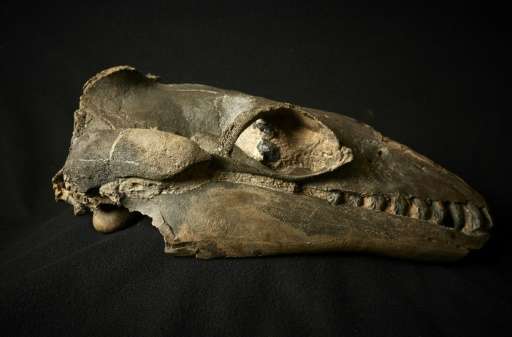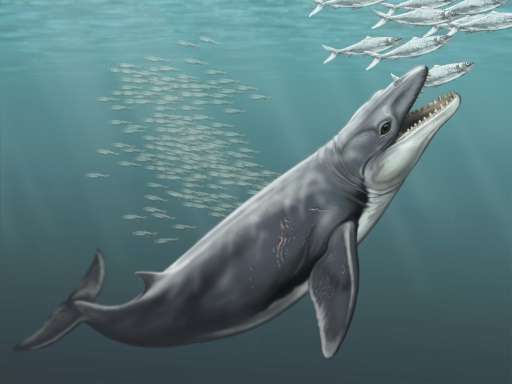Ancient whales were predators not gentle giants

Ancient whales had extremely sharp predator teeth similar to lions, Australian scientists said Wednesday in a discovery they believe debunks theories the mammals used their teeth to filter feed like today's gentle giants.
There are two major groups of whales—toothed creatures such as killer whales, and baleen, which filter plankton and small fish from the ocean for food with special bristle-like structures in their mouths.
Using 3D scanners, Museums Victoria and Monash University palaeontologists made digital teeth models of fossil baleen whales and today's mammals from specimen collections around the world.
They found that teeth in ancient baleen whales—the ancestors of the Southern Right and Blue whale—were different to the present-day and were instead much sharper.
"These results are the first to show that ancient baleen whales had extremely sharp teeth with one function—cutting the flesh of their prey," Museums Victoria's senior curator of vertebrate palaeontology Erich Fitzgerald said.
"Contrary to what many people thought, whales never used their teeth as a sieve, and instead evolved their signature filter feeding technique later—maybe after their teeth had already been lost."
A previous theory about ancient whales suggested they filtered feed using teeth that when closed formed a zigzag-like sieve, in a similar manner to some living Antarctica seals.

The sieve trapped food in the mouth and also allowed water to flow between the teeth. They were eventually replaced by baleen, the theory added.
The discovery, published Wednesday in the journal Biology Letters, meant "whales completely turned their feeding biology upside down" when they evolved to filter feed, Museums Victoria and Monash University research fellow David Hocking said.
The researchers said there was more work to do to understand the origins of baleen whales, which are Earth's largest animals, but feed on some of the smallest ocean creatures.
More information: "Ancient whales did not filter feed with their teeth," Biology Letters (2017). 10.1098/rsbl.2017.0348
Journal information: Biology Letters
© 2017 AFP




















